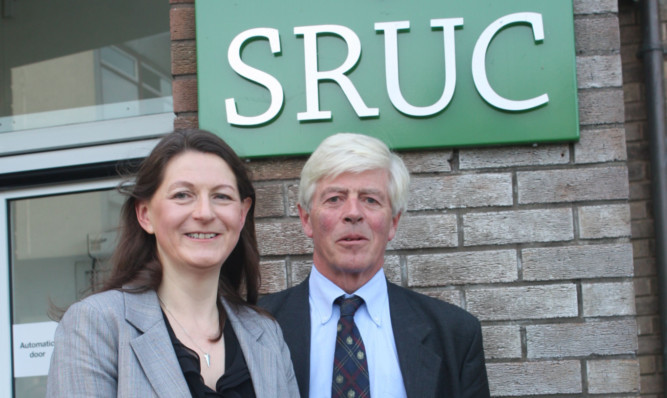SRUC, Scotland’s recently formed rural college, has made strong progress along all fronts over the last year, according to board chairman Lord Jamie Lindsay.
Launching the annual report at a press briefing in Edinburgh, he was also at pains to point out that ongoing partnership talks between SRUC and Edinburgh University were not to be the precursor to a takeover by an institution 10 times larger in terms of turnover.
“I also want to make it very clear that these talks were not driven by Scottish Government, and in fact ministers were not aware that talks were under way until we brought it up with them.
“They were in fact very excited to hear of the initiative.”
The proposed partnership would, said Lord Lindsay, strengthen SRUC across all three areas in which it operates namely research, education and advisory services.
SRUC and its predecessor body SAC have always defended the importance of continuing what has long been recognised as ‘the Scottish System’.
Acting chief executive Janet Swadling added: “Edinburgh University like what they see at SRUC and do not want to disturb the model.”
If a new partnership with Edinburgh University does go through, it will be a fast track into offering the degree-awarding powers which SRUC currently lacks, but the move is seen as more fundamental.
Ms Swadling, who has been with SAC and then SRUC for 20 years, described the current set of circumstances as the most exciting she had witnessed.
“I have never before had a sense of so many opportunities being available,” she said.
Her appointment to acting chief executive was made last November following the sudden and unexplained departure of Professor Bob Webb, who had only been in post for little over a year.
Asked why there had been no move to make a permanent appointment of a new chief executive and principal, Lord Lindsay explained that this had been delayed while the Edinburgh University talks were under way.
Only when they had been completed would it be possible to draw up a job specification.
The talks, he suggested, would be substantially complete by the end of this year.
“A second factor is that the interim structure has worked well and been very robust.
“We have at no stage felt that we have been in a vacuum which has to be filled,” he added.
SRUC itself has only been in existence for two years and involved the merger of SAC, Elmwood College at Cupar, Barony College at Dumfries and Oatridge College in West Lothian. This “four into one” process had gone remarkably smoothly given the complexity, said Lord Lindsay.
The accounts are of necessity complex as the 2012 merger process continues, but the ‘bottom line’ shows an operating deficit of £200,000 and an income of £84 million.
Comparisons with the previous year’s accounts are difficult to make because they contain information from different accounting periods for the four parties to the merger.
Ms Swadling said: “The results reflect a difficult trading period where, in common with many of our customers, our farms were affected by significant increases in costs which were not reflected in the prices paid for the outputs.
“There were also a number of one-off and merger costs which have had an impact on results.”
Even allowing for contributions from the Scottish Funding Council, these had cost SRUC £500,000 over the year.
Ironically there had also been some demerger costs, with elements of Elmwood College being transferred to Fife Council.
Ms Swadling acknowledged that SRUC was now sitting on a significant post-merger property and estate portfolio.
“The first stage is to appraise what we have and match it to what we want to do.
“The one thing I can say is that we are fully committed to regional delivery of all our services.”
Student numbers were up this year and courses were mostly full.
A new approach to board composition had seen two new appointments made to the board, with livestock and business adviser Douglas Bell representing staff ,and Elmwood student Bryony Dall nominated by the student body.
